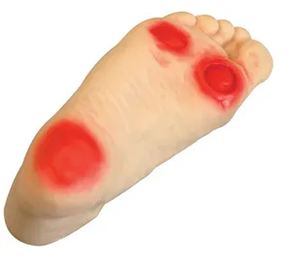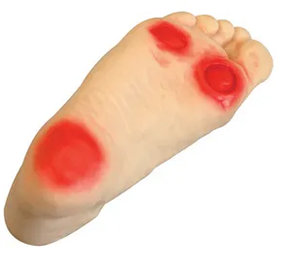ADA MED SUPPLY LIMITED
Phone:+86 19937901373
Tel:+86-0379-65160607
Email:adaanatomy@adaanatomy.com

Article tag: Diabetic Foot Care Model BIX-HS19 Medical Care Model

Diabetic foot is one of the common complications of diabetic patients. Early detection and correct nursing intervention are crucial to prevent complications. Diabetic foot care model, as a tool to simulate clinical operation, has become an indispensable part of nursing education. Through this model, participants are able to practice their foot care skills in a risk-free environment, effectively reducing errors in clinical care.

Clinical significance
Diabetic foot care is not only a simple wound treatment, it involves a comprehensive assessment and care of diabetic foot health, such as preventing infection, controlling blood sugar, reducing complications and so on. By simulating different pathological states of the foot, the diabetic foot care model enables nurses to master comprehensive nursing skills from foot examination to wound care and pressure distribution assessment in practice, so as to improve the accuracy of clinical operations. The use of simulation models can significantly reduce the risk of clinical errors that have long been caused by a lack of systematic training in these care practices.
Industry expert opinion
Many industry experts believe that the diabetic foot care model not only helps students understand basic care operations, but more importantly, improves their clinical decision-making skills. Through repeated operation, nursing staff can accumulate experience in actual operation and cultivate the ability to respond to emergencies. Experts point out that the use of this model has been shown to reduce problems such as wound deterioration, infection and patient harm caused by improper procedures.
Data support
Several studies have shown that nursing staff trained with simulated nursing models have significantly higher skills in diabetic foot care than those who do not receive simulated training. In a study conducted by a medical education institute, participants using the diabetic foot care model reduced their error rate by about 30% after standardized training. This data supports the important role of the model in reducing clinical care errors.
Conclusion
By simulating real nursing situations, the diabetic foot care model provides a practical platform for caregivers. It not only helps students improve the accuracy of skill operation, but also improves their resilience in complex cases, thus effectively reducing clinical care errors. This makes the diabetic foot care model a vital tool in modern nursing education.